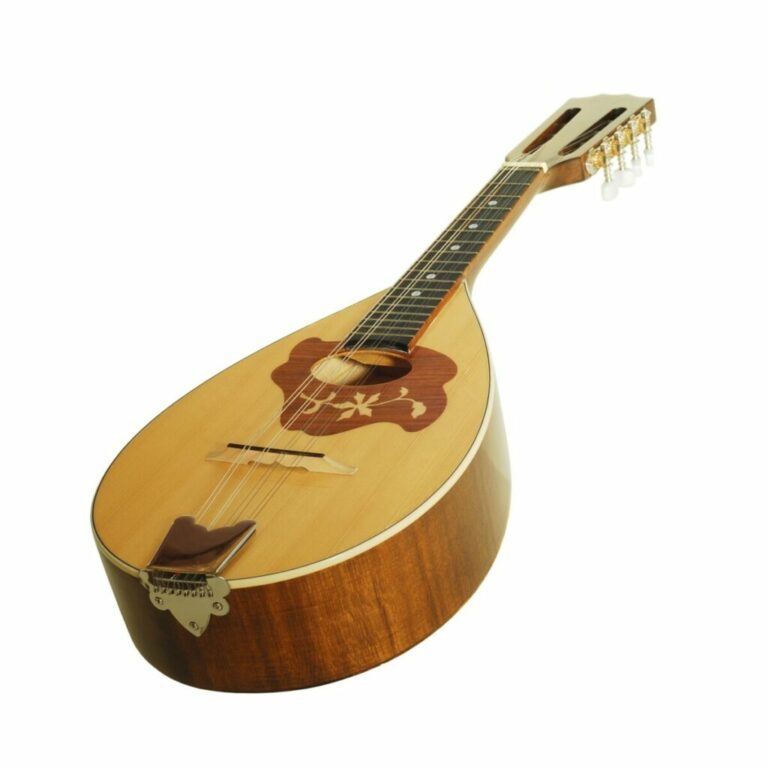Can You Put Nylon Strings On A Steel String Guitar?
Sometimes mixing and matching different guitar components doesn’t always work, and you can end up wasting a lot of money and time trying to change your guitar.
This is where nylon strings come in. Nylon strings are popular among guitarists, to the point where many decide to use them on their steel-string guitars. This brings us to our question: can you put nylon strings on a steel string guitar?
Short answer, you cannot put traditional nylon guitar strings on a steel string guitar. Classical nylon strings are tired on the bridge while steel string guitars use bridge pins to stay in. So the two do not use the same mounting strategy.
However, there is one exception to this rule: ball-end nylon strings. To find out more about different guitar strings and how to use them, check out the rest of this article.
What guitars use nylon strings?
You would normally use nylon strings on classical guitars, as classic nylon strings work well when tying them to the guitar. Guitarists know them for being more challenging to mount because they require you to tie them. However, they are a beloved item for classical player. The best strings for classical guitars are nylon. There are few exceptions to this rule.
What are nylon strings?
Nylon strings are exactly that: strings made of nylon. Treble strings use pure nylon, while bass strings use nylon wrapped in metal. The metal makes the bass strings heavier.
Nylon strings are perfect for beginners because they are softer and won’t hurt their fingers as much. This gives them more of an opportunity to become acquainted with chords and hand positions, as they can practice relatively pain-free. You’ll also find they create softer tones, which are ideal for those who play folk music or indie.
What are steel strings?
Steel strings are made from steel. They are bright and crisp in tone. They require more force to fret the notes compared to nylon strings because they are under more tension.
Metal is a sturdy material, meaning these strings will last longer, but require a bit more finger durability to use. Using steel strings causes you to build up callouses faster, which is ideal if you want to learn how to strum a guitar while plucking.
Ball-end nylon strings: the solution for guitarists who want to use nylon strings
Earlier, we mentioned that the “best of both worlds” string for this situation is ball-end nylon strings. These strings have the tones and higher tension of metal, but you can tie them to guitars that support the non-standard string type.
Below, you’ll find a list of ball-end nylon strings you might consider:
- Ernie Ball Folk Nylon Clear & Gold Ball-End
- Fender Nylon Classic Ball-End Guitar Strings
- Jim Dunlop Performance Nylon Ball-End Classical Guitar Strings
What to know before switching your guitar to nylon strings
There are a few things you will need to do when making the switch from steel strings to nylon. With these tips, your guitar sounds good and stays in good condition.
You need to tune nylon strings more often
Nylon strings use a softer material than steel. Because of this, they are more susceptible to slipping out of tune. You’ll need to tune your strings more often because of this.
Nylon strings slip more often
It is easy to install steel strings to tuners because they will form themselves as they grow tighter. Nylon is considerably more difficult to wrap because they have the tendency to slip a lot more.
Some nylon strings may need more wraps or more overlap to be held to the tuner. However, this usually goes away as soon as you tighten them.
You might need to adjust the nut grooves
Nut groove sizes can vary, so it’s important to remember that if you change your strings, then they may be too big. However, if the nut is too small, then this can be fixed by opening them up. However, if your material is too hard then it may be best to consult a technician. It is also important to keep your nut in a good condition so they can withstand the change.
Nylon strings might require you to adjust the truss rod
As previously mentioned, nylon strings provide less pressure compared to steel strings, so once changed you typically need to readjust the neck.
A great way to ensure your guitar gets to where you want it to be is by adjusting the truss rod. By loosening the truss rod, you reduce the tension for the nylon strings, and this will prevent the guitar’s neck from bowing.
Why Would You Use Nylon Strings On A Steel-String Guitar?
Aside from nylon strings being easier to play, people are switching to them because they work best with their style of guitar playing. Guitarists who like to finger pick, and who prefer the mellower, rounder sound of nylon strings that is reminiscent of folk music, will find that they will be the best choice regardless of guitar type.
Can you put nylon strings on an acoustic guitar?

You can put nylon strings on an acoustic guitar! However, because acoustic guitars typically use steel strings, adjust for the softer sound.
If you want to make the switch to nylon strings for your acoustic guitar, then the rules that apply to a steel-string guitar will apply here.
- Use nylon strings with a ball-end.
- Make sure the nut grooves will work with the strings and change them if they don’t with a modification nut file set.
- Adjust the strings to fit into the tuning machine.
- To reduce the tension for the strings, loosen the truss rod.
Can you put steel strings on a classical guitar?
This is important: you cannot put steel strings on a classical guitar. This is because steel strings require a lot of tension compared to their nylon counterparts.
Therefore, classical guitars are not strong enough to handle steel strings, and when trying to make the switch, the neck of the classical guitar would break away from the body. If you want to move away from nylon strings for your classical guitar, then we recommend using bass strings.
What strings are best for acoustic electric guitars?
Because these still fall under the acoustic category, acoustic-electric guitars benefit mostly from steel strings. Despite the sound boosting, these are still acoustic guitars.
Of course, you need to be sure that your strings meet the same quality as the guitar. So be sure you have one of the best acoustic-electric guitars alongside getting some high-quality strings from companies like Ernie Ball.
How do you protect your guitar strings?
No matter what strings you choose, you’re going to need to take care of them so they can last for a long time. There are a few things you can do to ensure your guitar strings get the best protection, no matter what kind they are!
Wipe the guitar strings
This is not a common practice among guitar players, but it is important. You should wipe your guitar strings with a thin cloth from top to bottom. This can remove any substances that can cause corrosion that is left after playing.
Condition your guitar strings
Conditioning your guitar strings adds another layer of protection from corrosive and harmful substances.
Know when to change your guitar strings
Knowing when to change your strings is just as important as knowing how to take care of them. These are the questions to ask yourself for changing your guitar strings:
- How often you play
The time you change your strings depends entirely on how often you play. If you do not play often, you won’t need to change your strings much. However, if you play for hours upon hours daily, then you will need to change your strings far more often.
- The strings you use
Some strings already come with a protective coating, which has a longer shelf life than uncoated strings. However, coated strings can sound different, so you have to decide whether you will put up with the musical shift.
- The corrosion of your strings
If your strings are corroded, they will feel unpleasant to touch. Corroded strings can also affect their tone. Some guitarists will corrode their strings more than others, so it’s important to recognize how you play and how that affects your strings.
Frequently Asked Question About Guitar Strings
Are nylon strings easier to play than steel strings for your guitar?
Nylon strings make playing the guitar easier because they are easy on your fingers. This means you can play the guitar with little pain.
Nylon strings allow you to strengthen your fingers and develop calluses, which will be helpful if you want to eventually switch to metal strings.
Can you use a pick with nylon strings?
While you can use a pick to play nylon strings, your strings will wear faster. Human fingers are softer than plastic. So the pick, being the harder material, is more likely to affect the strings.
This, of course, is not a wholly negative thing, and should not deter you from the practice. After all, all strings wear away eventually! If using a pick with nylon strings sounds good to you, then do it!
How often should you change nylon strings?
You should change your guitar strings every three months or for every 100 hours you play. This works as a general rule, and individual strings might make different claims.
Your strings will either wear out from exposure to the elements or use. Regardless, think of it as changing the oil in your car. You wouldn’t want your car running on old oil.
If you do not change your strings, your guitar will eventually sound bad. Eventually, they become difficult to tune, feel weird to touch, and will break. If you don’t want this to happen mid-gig, then it’s best to change them as per the recommendations.
Do nylon strings need tuning more often?
As a general rule, nylon strings will need to be tuned more often than steel strings. Nylon strings are more sensitive to general temperature changes because of their soft material. Their softer material also makes them more likely to go out of tune.
However, steel strings only need regular tuning if they are new. Once they have settled, they will not need to be tuned nearly as often.









